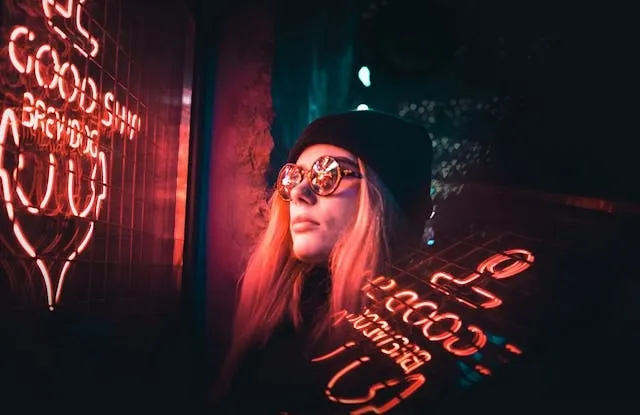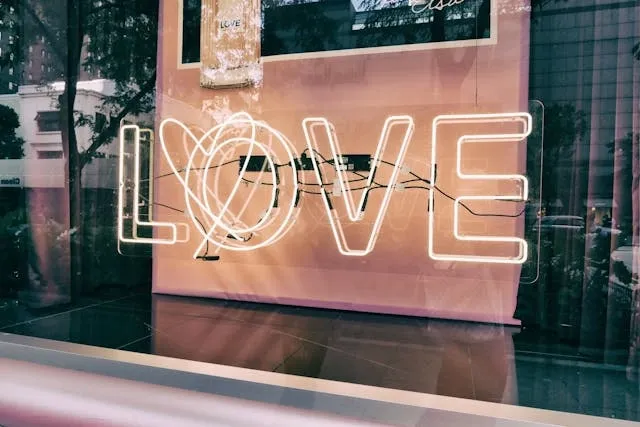How Are Neon Signs Made: Step-By-Step Process, Materials, And Designs
With their vibrant glow and universal appeal, neon signs have unique production processes that combine craftsmanship with precise technology. From bending glass tubes into custom shapes to adding the gasses that produce those vivid colors, each neon sign is designed and assembled with care.
In this guide, we talk about how neon signs are made, including LED opinions, to help you understand the techniques used to produce these iconic glowing lights.

Key Takeaways
- Neon sign creation involves bending the tubes, filling them with gas, and bombardment to clear impurities. Temperature control is essential when shaping the glass tubes.
- There are various essential components, including the glass tubing, neon or argon gas, and electrical wiring and components to make the neon sign work.
- Customization can be achieved through shaping the glass tubing and by using different gas types and phosphor coatings. LED tubing is much easier to bend and has more colors.
- We supply high-quality custom LED neon signs that are energy efficient, bright, and durable, and you can order them in a wide range of designs.
Table of contents
-
How Are Neon Signs Made?
-
What Are The Main Components In Neon Sign Production?
-
How Do The Materials And Gasses Influence LED Neon Light Colors?
-
How Can You Customize The Colors And Design Of Neon Signs?
-
What Are The Challenges In Making Neon Lights?
-
How Do Electrical Components Affect Neon Sign Longevity?
-
How Are Colors Tested In Neon Signs Before Final Assembly?
-
How Are LED Neon Signs Different From Traditional Neon Signs?
-
Why Is Temperature Control Important In Neon Sign Manufacturing?
-
What Should You Prepare Before Ordering A Custom Neon Sign?
How Are Neon Signs Made?
Creating neon signs starts with the heating and bending of glass tubes to create the desired shape. Once you have the basic structure of the neon sign, the tubes must undergo a bombardment process to remove impurities - this is done through exposure to intense heat.
When ready, the tubes are filled with neon or argon gas, depending on the color effect you want to achieve. When an electrical current is passed through this gas, the tubes emit a glow due to chemical processes in the particles.
Handcrafted signs are created through highly-skilled tube bending and gas handling, so they can be expensive. Many modern creation methods use machinery, however, for consistent results and a lower price. Alternatively, you can buy custom LED signs from us that use energy-efficient LEDs and flexible tubing for a far simpler creation.

Tools And Equipment Used To Make Neon Lights
The manufacture of neon signs involves the architect, lighting engineer, and the signmaker. Each will use a variety of materials and tools to make the neon lights, so there is more to it than you might think.
Neon sign production requires specialist equipment, so let’s look at what’s involved in the crafting process:
- Glass-bending burners: These heat the glass tubes for shaping.
- Hand torches and ribbon burners: Craftsmen use these to refine bends and twists in the design.
- Bombarders: A tool to purify the tubes so that they are ready to hold the gas.
- Electrodes and transformers: Important for providing the necessary electrical current to illuminate the tubing.
Other possible tools include high-temperature torches, air blowers, and phosphor coating for deeper customization and color manipulation. It takes skill and experience to master all these tools, but LED neon signs are considerably simpler, so you get a lower price tag with more options for customization and a similar aesthetic at the end of it.
What Are The Main Components In Neon Sign Production?
The main components in neon sign production are the glass tubes, the neon or argon gas, phosphor coatings and electrical circuitry.
- Glass tubes: These are heated and bent into shape, and they hold the gas that gives off the characteristic glow.
- Neon gas: This produces a warm red glow, while argon gas creates a cooler blue light.
- Phosphor coatings: These are added to the inside of tubes to alter colors for a wider color range.
- Electrics: Electrodes at each end of the tube and a transformer deliver the electrical charge so that the gas emits light.
Each component works together to create the overall result. However, neon lights are bad for the environment as they consume a lot of electricity and are difficult to dispose of. LED neon signs, meanwhile, are energy efficient and highly recyclable, so many consider them a better option.
Make a statement with a unique design that's all your own
Light up your life with our custom LED neon signs!
Order now and let us bring your vision to life
How Do The Materials And Gasses Influence LED Neon Light Colors?
The gasses and coatings used in neon lights have a major impact on the resulting color. When a sufficient electrical current passes through it, neon gas produces a red light. Argon combined with mercury, meanwhile, gives off a cooler blue. By adding phosphor coating on the inside of the glass tubing, these colors can be varied by changing the way the light appears. It allows for colors like:
- Pink
- Green
- Purple
Glass-blowing techniques also have an influence on color customization, as various coatings and dyes can enhance hues. If you want even greater control over the color of your sign, with more options to choose from, work with us to create custom LED neon lights. The technology allows for a far wider variety of colors with a brighter shine, so you can meet your specific branding needs with a more durable product at a lower price.
How Can You Customize The Colors And Design Of Neon Signs?
Customization options for neon signs extend to the colors, shapes, and coatings. As mentioned, different gasses offer distinct base colors, while phosphor coatings can be added to further increase the color variety.
With this flexibility, businesses and individuals can match their signs with specific colors or visual themes to get the look they want. Meanwhile, the glass tubes can be skillfully bent into intricate designs like logos or text to create a tailored look.
Choosing colors based on gas type or coating is your only option when you choose traditional neon signs. However, there is an alternative. Work with us to create custom aesthetic neon signs that use cutting-edge LED technology and you can create one-of-a-kind, brand-reflective designs with a much broader color spectrum. You will also enjoy lower prices, superior energy efficiency, and greater durability.
Stand out from the crowd with a one-of-a-kind design
Illuminate your world with our custom LED neon signs!
Order now and let us help you make a statement
Make Your Custom Neon SignsWhat Are The Challenges In Making Neon Lights?
As you are probably realizing now, how neon signs are made comes down to complex techniques and meticulous craftsmanship. Here are some of the challenges in the manufacturing process:
- Tube bending: This is a challenging skill, as glass has to be heated to a precise temperature to avoid breakage.
- Gas handling: This requires expertise as well, as improper filling can result in malfunctions.
- Specialized skills: The use of complex tools and precision timing with the gas further add to the difficulty.
Skilled artisans and technicians are essential for maintaining quality, which is why production costs and time are usually quite high. Even minor errors can lead to problems - you’ve probably seen some funny broken neon sign fails on the internet, and this issue is all-too-common.
All these complexities contribute to the distinctive value of neon signs. But a similar aesthetic can be achieved with LED ones without all the complexity and risk of error.
How Do Electrical Components Affect Neon Sign Longevity?
The quality of the electrical components in a neon sign can make a big difference to how long it lasts. Things like transformers and wiring directly impact the durability of neon signs.
- Transformers: These control the electrical current to ensure a consistent flow without flickering. This is an intensive task that can cause the components to wear down over time.
- High-quality wiring: This is crucial for safety and sign longevity. Inferior wiring risks overheating and reduces the overall lifespan.
Neon signs use lots of electricity in comparison to their LED alternatives, and the components are prone to wear and tear over time. The use of top-grade electrical parts reduces issues like dimming or burnout, so your neon signs will be more reliable. But you will need to maintain them regularly to extend your sign’s functional life. If you want a low-maintenance, durable neon sign, explore our custom LED products instead.

Impact Of Electrical Quality On Sign Durability
As mentioned in the previous section, the quality of your electrical components will have a big impact on the durability of your signs. The transformers, electrodes, and wiring will face high-voltage currents, and your neon sign will likely be active for long periods. Inferior products will wear down relatively quickly, potentially causing issues for your sign.
You should look for products with high-quality components and make sure you maintain them regularly. This means:
- Keeping them clean and dust-free.
- Checking for damage or faults.
- Replacing broken components swiftly.
If you want something that requires less work, you could look at your custom LED neon signs or something completely different. Backlit signs or marquee letter signs are popular alternatives that are eye-catching and give your space a different ambiance, so consider your options.
Create a design that's uniquely yours
Brighten up your space with our custom LED neon signs!
Order now and let us help you add a pop of color
How Are Colors Tested In Neon Signs Before Final Assembly?
The global neon signs market is forecast to grow by 5.5% each year up to 2030, so it is clear that they are a popular product. Both traditional neon signs and modern LED ones are rising in demand, so quality control is an important consideration for manufacturers and craftspeople.
To achieve the intended color for neon signs, various gasses and coatings must be tested. Each tube is filled with specific gasses and illuminated with electric current to evaluate the resulting hue. Phosphor coatings are also tested in this way to confirm they have the desired effect on the final color.
These tests are an important step to ensure that the sign displays vibrant, consistent colors once in use. The testing phase of trialing different gasses and coatings ensures designers can guarantee that their sign meets expectations. Again, this is simpler with LED signs as the bulbs can be manufactured in precise hues so customers know exactly what to expect.
How Are LED Neon Signs Different From Traditional Neon Signs?
We have mentioned LED signs a lot in this exploration of how neon signs are made. This is because they are a modern alternative to traditional neon signs, and there are distinct differences in design and function.
- Traditional neon signs: These use glass tubes filled with gas to create a colored glow.
- LED neon signs: These consist of flexible tubing with LED strips inside.
Modern LED technology is more energy-efficient and it delivers a broader range of colors. These products are also more durable and available at a lower price point, which is why most will opt for them when considering LED neon vs glass neon lights. The only real advantage you get with traditional neon signs is the classic glow, which LED signs closely replicate.
If you want a durable and cost-effective neon sign with minimal maintenance needs, you are better off choosing modern LED lighting. Ultimately, you need to consider exactly what will work best for you.
Create a unique design that captures the essence of your love story
Add a touch of romance to your special day with our custom LED neon signs!
Order now and let us help you make your wedding day unforgettable.
Make Your Custom Neon SignsWhy Is Temperature Control Important In Neon Sign Manufacturing?
Temperature control is an important consideration in glass neon sign production, particularly when bending the glass tubing to avoid breaking it. By heating the glass typing to the right temperature, the neon sign maker provides enough flexibility for shaping without compromising the durability of the tubes.
Precise temperature control also plays a role in the behavior of gas within the tubes. Different gasses react under varying temperatures to give off the desired lighting effect. By maintaining controlled conditions during the stages of bending and gas-filling, you achieve consistent quality and vibrant color. Even slight temperature deviations can have a significant effect.
If you want a simpler solution without all the intricacies of temperature, gasses, and electrical currents you could create a custom vinyl banner to display the information you want and shine a light on it for illumination.
How Temperature Influences Gas Behavior
When the gas in a neon sign is exposed to the correct voltage and temperature, the neon atoms are excited and begin to emit light. However, fluctuations in temperature can have an impact on the brightness and longevity of a sign:
- Cold: When temperatures drop, the light of a neon sign may become dimmer as the lower temperature slows the gas particle movement.
- Warm: Excessive heat can over-excite the atoms, so you may see irregular light or potential tube damage.
Proper temperature control is important for a vibrant, consistent glow from your neon sign. Or you could use an LED alternative, which is largely unaffected by temperature.

What Should You Prepare Before Ordering A Custom Neon Sign?
When ordering a custom neon sign, you should carefully plan the design, size, and color scheme to ensure it meets your aesthetic needs fully. You must also pay close attention to your budget, as the size, materials, and design complexity will all have an impact on cost.
Timelines are another key consideration as the production and shipping can take several weeks with traditional neon signs. You should also be mindful of technical specifications, like power requirements, to ensure your intended sign is compatible with your installation space.
You will need to liaise closely with your manufacturer and ensure every detail meets your requirements. When you work with us to make your own neon sign, the LED technology means it is simpler and faster to get something that meets your exact needs.
Frequently Asked Questions About How Are Neon Signs Made
How Are Custom Neon Signs Made?
Custom neon signs are produced by heating and bending glass tubes into the right shapes. The tubes must then be bombarded to purify them, before filling them with gasses like neon or argon and attaching the electrical components.
Do Neon Signs Actually Use Neon Gas?
Yes, traditional neon signs use neon gas for a classic red glow. Argon is sometimes combined with mercury to create other colors. Modern signs use LED technology for a simpler and more flexible approach.
